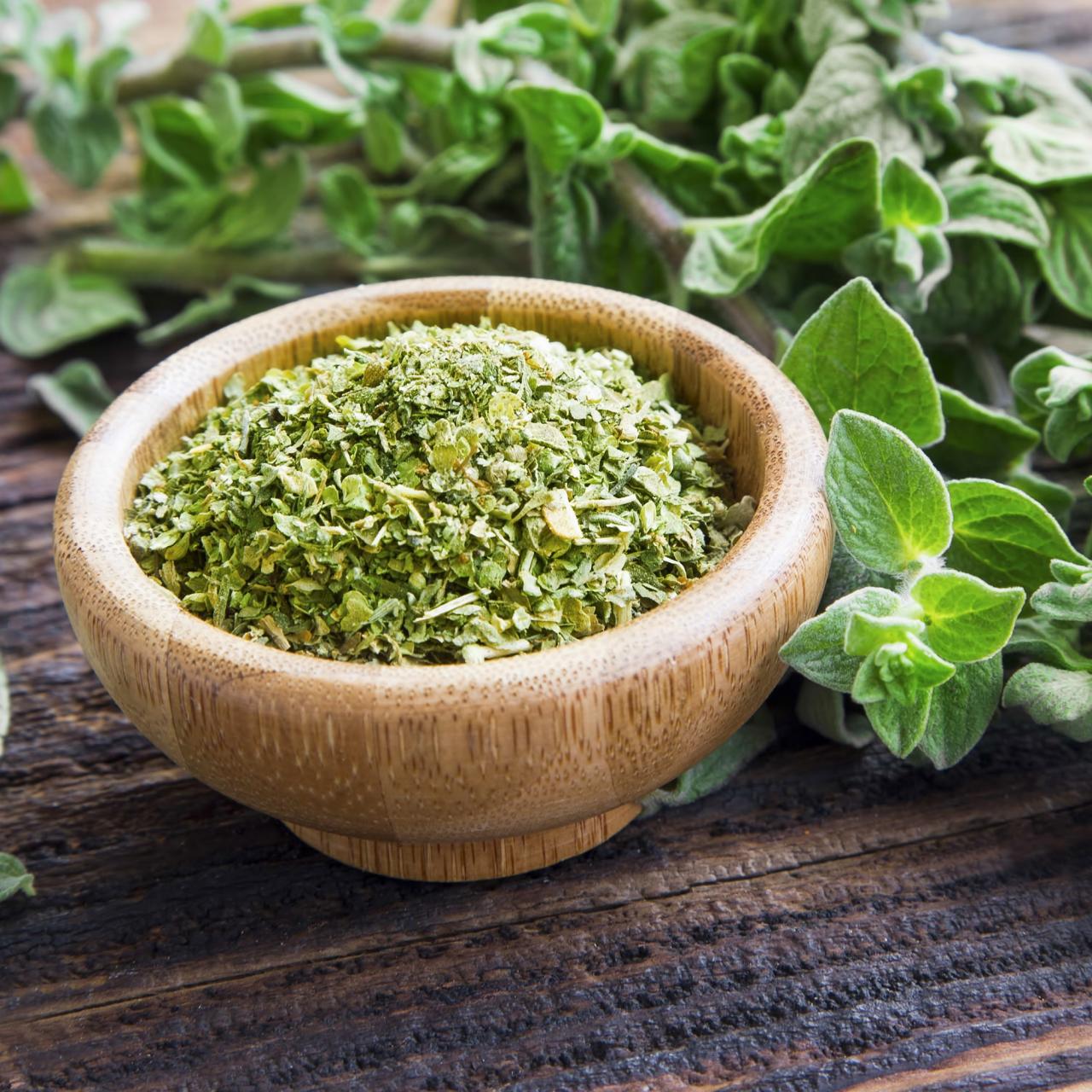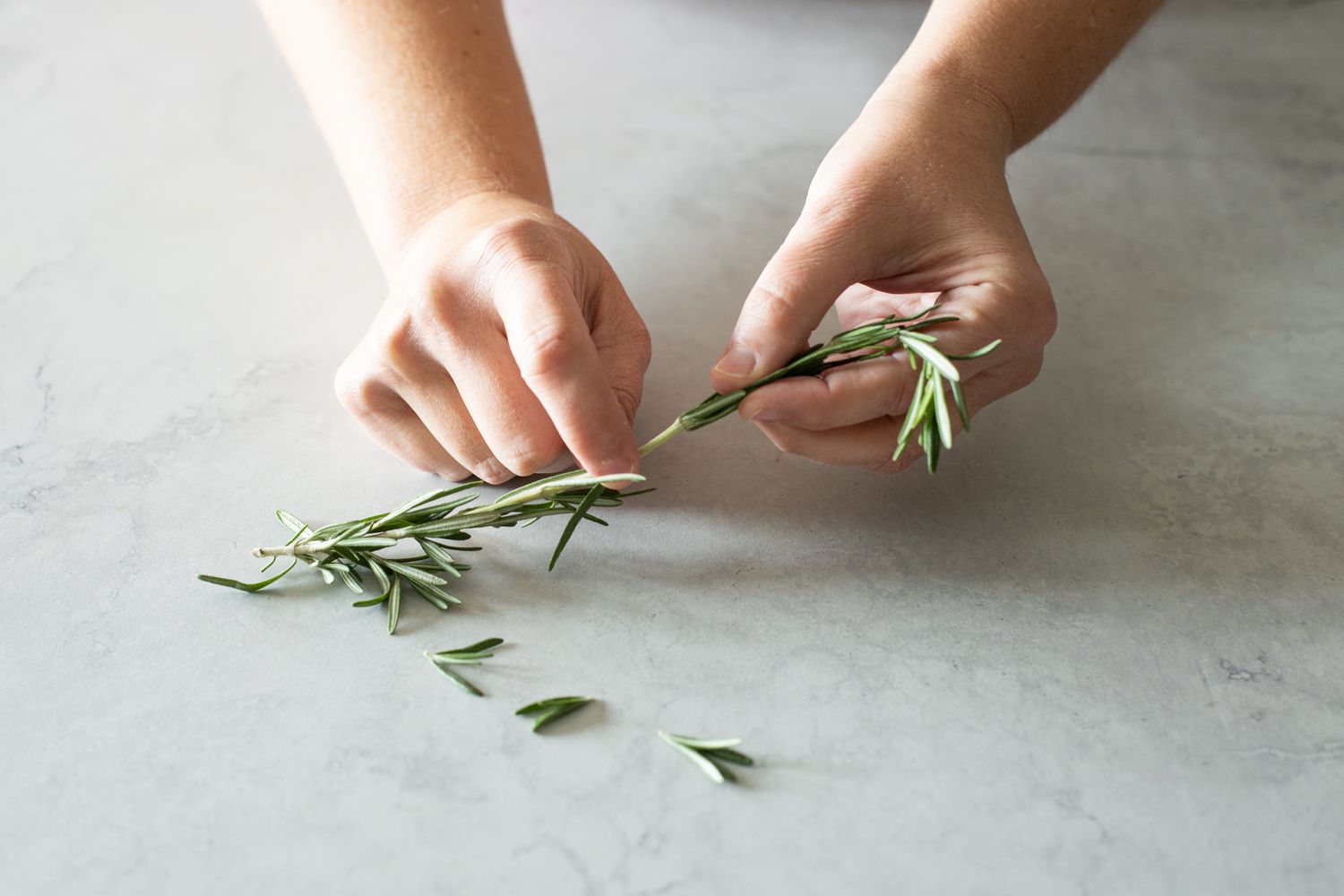Home>Gardening Techniques>DIY Projects>How To Preserve Sage And Rosemary


DIY Projects
How To Preserve Sage And Rosemary
Published: February 2, 2024
Learn how to preserve sage and rosemary with these easy DIY projects. Discover simple methods to keep your herbs fresh for longer.
(Many of the links in this article redirect to a specific reviewed product. Your purchase of these products through affiliate links helps to generate commission for Chicagolandgardening.com, at no extra cost. Learn more)
Table of Contents
Introduction
Selecting Fresh Sage and Rosemary
When it comes to elevating the flavors of your culinary creations, few herbs are as versatile and aromatic as sage and rosemary. These two herbs not only add depth and complexity to a wide array of dishes but also offer a myriad of health benefits. Whether you have an abundance of fresh sage and rosemary from your garden or you simply want to make the most of store-bought herbs, preserving them for future use is a fantastic way to ensure a readily available supply of these flavorful additions.
By properly preserving sage and rosemary, you can harness their full potential and enjoy their delightful essence in your cooking year-round. In this guide, we will explore various methods for preserving these herbs, including drying, freezing, and creating infused oils. With these techniques at your disposal, you can savor the rich flavors and enticing aromas of sage and rosemary in your favorite dishes whenever the craving strikes.
Join us as we delve into the art of preserving sage and rosemary, unlocking the secrets to maintaining their freshness and flavor long after they are harvested.
Selecting Fresh Sage and Rosemary
Before delving into the preservation process, it’s crucial to start with the freshest sage and rosemary possible. Whether you’re harvesting these herbs from your own garden or selecting them from the produce section of your local market, there are several key factors to consider when choosing the best specimens for preservation.
When selecting fresh sage, look for vibrant, velvety leaves that are free from blemishes or discoloration. The leaves should exude a robust aroma, signaling their potency and freshness. Similarly, opt for rosemary sprigs that boast firm, needle-like leaves with a deep green hue. Avoid any limp or discolored sprigs, as these may have already begun to deteriorate.
It’s best to harvest sage and rosemary in the morning when their essential oils are most concentrated, ensuring maximum flavor and fragrance. If you’re purchasing these herbs, seek out a reputable source that prioritizes quality and freshness. Whether you’re growing your own herbs or sourcing them from a trusted supplier, selecting the freshest sage and rosemary sets the stage for successful preservation.
By starting with top-quality herbs, you’re laying the foundation for preserved sage and rosemary that will impart vibrant flavors and enticing aromas to your culinary creations. With these carefully selected herbs in hand, you’re ready to embark on the journey of preserving their essence for future use.
Drying Sage and Rosemary
Drying is one of the oldest and most effective methods for preserving herbs like sage and rosemary. Not only does it concentrate their flavors, but it also allows you to enjoy these herbs throughout the year, even when they are out of season. The process of drying sage and rosemary is relatively simple and can be accomplished using several techniques.
Air Drying: To air dry sage and rosemary, gather small bunches of the herbs and secure them with twine or rubber bands. Hang the bundles upside down in a warm, well-ventilated area out of direct sunlight. This method allows the herbs to air dry slowly, preserving their essential oils and flavors. Once the herbs are completely dry, typically within 1-2 weeks, remove the leaves from the stems and store them in airtight containers.
Oven Drying: If you prefer a quicker drying method, consider using your oven. Lay the sage and rosemary leaves in a single layer on a baking sheet and place them in an oven set to its lowest temperature (usually around 180°F or 80°C). Keep the oven door slightly ajar to allow moisture to escape. Check the herbs regularly, as they can dry within 1-2 hours. Once dry, crumble the leaves and store them in airtight containers.
Dehydrator: Using a food dehydrator is another efficient way to dry sage and rosemary. Simply spread the herb leaves in a single layer on the dehydrator trays and follow the manufacturer’s instructions for drying herbs. Once the herbs are crisp and brittle, remove them from the dehydrator and store them in airtight containers.
Regardless of the drying method you choose, it’s important to ensure that the sage and rosemary are fully dry before storing them. Properly dried herbs will retain their flavor and aroma for an extended period, allowing you to infuse your dishes with the essence of sage and rosemary whenever the need arises.
Freezing Sage and Rosemary
Freezing sage and rosemary is an excellent way to preserve their fresh flavors and vibrant colors, especially if you prefer to use these herbs in their original form rather than dried. This method allows you to maintain the herbs’ natural texture and appearance, making them a convenient addition to your culinary endeavors. Here’s how to freeze sage and rosemary effectively:
Preparation: Start by washing the sage and rosemary under cold water to remove any dirt or debris. Pat the herbs dry with paper towels to eliminate excess moisture. Next, remove the leaves from the stems, as the stems can become woody and unpalatable when frozen.
Flash Freezing: Lay the individual sage leaves and rosemary needles in a single layer on a baking sheet lined with parchment paper. Place the baking sheet in the freezer and allow the herbs to freeze for 1-2 hours, or until they are firm to the touch. This initial freezing step prevents the herbs from clumping together in the final storage containers.
Storage: Once the sage and rosemary are flash-frozen, transfer them to airtight containers or resealable freezer bags. Label the containers with the date and type of herb to keep track of their freshness. Properly stored, frozen sage and rosemary can maintain their quality for up to six months.
When it’s time to use the frozen sage and rosemary, there’s no need to thaw them first. Simply remove the desired amount from the freezer and incorporate them directly into your recipes. Whether you’re adding a handful of frozen herbs to a simmering soup or seasoning a roasting chicken with their aromatic essence, frozen sage and rosemary offer a convenient and flavorful solution for preserving these beloved herbs.
Making Sage and Rosemary Infused Oil
Infusing oil with the earthy, aromatic flavors of sage and rosemary is a delightful way to preserve the essence of these herbs while adding a new dimension to your culinary repertoire. Sage and rosemary infused oil can be used to impart a rich, herbaceous taste to a wide range of dishes, from roasted vegetables and grilled meats to homemade vinaigrettes and marinades. Here’s how to create your own infused oil:
Ingredients: To make sage and rosemary infused oil, you’ll need fresh sage and rosemary, a high-quality oil with a neutral flavor (such as olive oil or grapeseed oil), and a sterilized glass bottle or jar for storage.
Preparation: Wash and thoroughly dry the sage and rosemary to remove any dirt or moisture. Bruise the herbs gently with a mortar and pestle or by rolling them between your hands to release their essential oils, enhancing the infusion process.
Infusion: Place the prepared herbs in a clean, dry glass container. Heat the oil in a saucepan over low heat until it reaches approximately 100°F (38°C). Pour the warm oil over the herbs, ensuring they are completely submerged. Seal the container tightly and allow the herbs to infuse in the oil for 1-2 weeks, storing it in a cool, dark place. The longer the infusion period, the more robust the flavor will become.
Straining and Storage: After the infusion period, strain the oil through a fine-mesh sieve or cheesecloth to remove the herbs, then transfer the infused oil to a sterilized glass bottle or jar. Store the infused oil in a cool, dark place to maintain its flavor and quality. Properly stored, sage and rosemary infused oil can last for several months.
Whether drizzled over a freshly baked focaccia, used as a dipping oil for crusty bread, or incorporated into your favorite recipes, sage and rosemary infused oil adds a touch of herbal sophistication to your culinary creations, elevating them with the timeless essence of these beloved herbs.
Storing Dried Sage and Rosemary
Once you have successfully dried sage and rosemary using your preferred method, proper storage is essential to maintain their flavor and potency over time. By storing these dried herbs correctly, you can ensure that they remain a flavorful and aromatic addition to your culinary endeavors. Here’s how to store dried sage and rosemary effectively:
Airtight Containers: Transfer the dried sage and rosemary leaves to clean, airtight containers, such as glass jars or resealable bags. The containers should be opaque or stored in a dark place to shield the herbs from light, which can degrade their flavor and color over time.
Cool, Dry Location: Store the containers of dried herbs in a cool, dry area away from direct sunlight and heat sources. Excessive exposure to light, heat, and moisture can compromise the quality of the herbs, leading to a loss of flavor and potency.
Labeling and Date: Properly label the containers with the name of the herbs and the date of storage. This simple step helps you keep track of the herbs in your pantry and ensures that you use the oldest herbs first, maintaining a fresh supply for your culinary creations.
Storage Duration: When stored correctly, dried sage and rosemary can maintain their flavor for up to one year. While the herbs will not spoil after this time, their flavor may diminish gradually, so it’s best to use them within a year for optimal taste and aroma.
By following these storage guidelines, you can preserve the vibrant flavors and enticing aromas of your dried sage and rosemary, allowing you to infuse your dishes with the timeless essence of these beloved herbs throughout the year.






